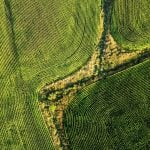The Stratus AirSprayer is new aerial spray tech based on paragliders, launched by Saskatchewan firm, which offers potential advantages to conventional spray drones.



Spray regulations haven't kept up with drone advancements


Biofuels, spray drones and the Canada Grain Act — KAP sets its lobbying goals for 2024

Spraying tips to use once the combine is parked

Air disturbance from the sprayer itself may be affecting your drift risk

Move makes life difficult for growers who’ve already booked inputs


Water restrictions threw another wrench into spray season for producers in early June

How to manage a dry and windy spray season that has gone from below freezing to extreme heat in a matter of days